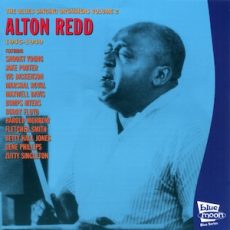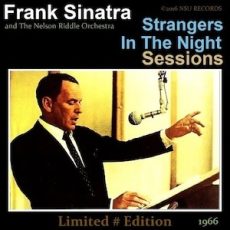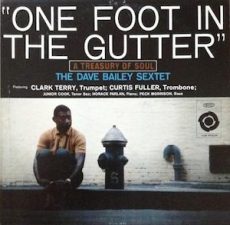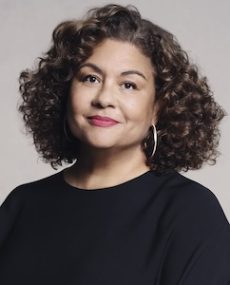
Daily Dose Of Jazz…
Fletcher Smith was born on September 22, 1913 in Lincoln, Nebraska and was orphaned by the age of eight. He and his siblings moved in with their grandfather who had a nine-room house. When the Lloyd Hunter Serenaders came through Lincoln and there was a guitar player there named Finney. He asked Finney to teah him to play if he could get his uncle to buy him a banjo. He wrote out a chart of chords and gave him lessons when he came back.
Smith played for Cootie Williams in 1943 and in the following years with Slim Gaillard, King Perry, Varetta Dillard, Jimmy Rushing, Big Maybelle, Linda Hopkins, Sister Rosetta Tharpe, Stick McGhee, Mickey Baker, Percy Mayfield, and Geechie Smith. In the Fifties he performed with Earl Bostic, Percy Mayfield, Benny Carter, Billy Eckstine, Lionel Hampton, Les Hite, and the Ink Spots, among others.
Under his own name, Fletcher Smith’s Squares and Fletcher Smith’s band, he played in the 1950s and recorded several singles such as Mean Poor Gal, Ting Ting Boom Scat or Shout, Shout, Shout. He recorded extensively as a sideman and toured most of the United States with various organizations. During the early 1970s he was a popular artist in Paris, France performing with the Golden Gate Quartet. From 1981 to 1991 he was featured in Las Vegas, Nevada.
Upon his return to Los Angeles, he became one of the mainstays of the Southern California music scene, he continued playing and honing his book of tunes and arrangements until his death. Pianist and bandleader Fletcher Smith died on August 15, 1993 in Los Angeles, California.
More Posts: bandleader,history,instrumental,jazz,music,piano

Daily Dose Of Jazz…
Charles Fowler Singleton Jr. was born on September 17, 1913 in Jacksonville, Florida. He attended several schools in and around the city and graduated from Stanton High School in 1935. Always interested in singing and dancing, by the time he left school he had become a proficient songwriter. He also produced shows and was responsible for several musical extravaganzas, including April Frolics, which was staged at a nightspot in LaVilla in Jacksonville. Singleton continued to work in Jacksonville into the 1940s.
The early 1950s Singleton moved to New York City and presented his lyrics to Decca Records, who signed him up as a songwriter. By 1954, he had teamed up with Rose Marie McCoy, and the pair went on to write successful hits for Joe Turner, Faye Adams and Ruth Brown. In 1956, Singleton and McCoy, as Charlie and Rosie, recorded a single together on RCA Victor.
Singleton went on to write songs for Pat Boone, Nat King Cole, Ella Fitzgerald, B. B. King, Peggy Lee, Johnny Mathis, Wayne Newton and Andy Williams. In the late 1950s and early 1960s, Singleton largely wrote songs without a writing partner, and also recorded an album, The Big Twist Hits, released in 1962 and credited to the Charlie “Hoss” Singleton Combo.
When the song Beddy Bye by Bert Kaempfert came to Frank Sinatra through his producer Jimmy Bowen, he asked the composer to tune it into a song. Bert engaged Singleton wrote the lyrics and Eddie Snyder adapted the music for what became Strangers in the Night and the song became a #1 hit for Sinatra.
He and Snyder had also reworked another Kaempfert instrumental called “Moon Over Naples” into the song Spanish Eyes. Composer and lyricist Charles Singleton, who was known as Hoss, and who also produced several platinum albums, died on December 12, 1985 in his home city.
More Posts: composer,history,instrumental,jazz,lyricist,music

Daily Dose Of Jazz…
Gerald Graham Valentine was born on September 13, 1914 and received formal training in music when he was young, learning piano, composition, and music theory. He learned to play the trombone on his own.
In the early 1940s Jerry composed and arranged for Earl Hines and worked in Chicago with Dallas Bartley, King Kolax and he booked shows for the Club DeLisa. He then joined Billy Eckstine’s band from 1944 to 1947 and worked later in the decade with Wynonie Harris and Buddy DeFranco.
From 1950 to 1952 Valentine was an artist and repertory man for National Records. He played with Gene Ammons in 1954, and in 1958-1959 wrote arrangements for Pepper Adams, Art Farmer, and Coleman Hawkins in the group Prestige Blues Swingers.
Trombonist, composer and arranger Jerry Valentine died in October 1983.
More Posts: arranger,composer,history,instrumental,jazz,music,trombone

Daily Dose Of Jazz…
Peck Morrison was born John A. Morrison on September 11, 1919 in Lancaster, Pennsylvania. He was classically trained, and in addition to bass, being competent on trumpet and percussion was also his talent.
During World War II he played in military bands in Italy and after the war he moved to New York City to play professionally. He played with Lucky Thompson in the early 1950s, and then recorded with Horace Silver, Gigi Gryce, and Art Farmer. He played and toured Europe with Gerry Mulligan.
He was a noted accompanist and sideman with Carmen McRae, Tiny Bradshaw, King Pleasure, Zoot Sims, Dave Bailey, Betty Carter, Eddie Jefferson, the J. J. Johnson/Kai Winding Quintet, and Duke Ellington in the Fifties and the latter in the 1960s.
He performed or recorded in the Sixties with Lou Donaldson, Johnny Smith, Mal Waldron, Randy Weston, Babs Gonzales, the Newport Rebels, Shirley Scott, Red Garland, Charles McPherson, and Sy Oliver. In 1986 he performed as a member of the Harlem Blues and Jazz Band.
Bassist Peck Morrison, who never recorded as a session leader, died on February 25, 1988.
More Posts: bandleader,bass,history,instrumental,jazz,music

Jazz Poems
FOUR BONGOS: TAKE THE A TRAIN for Vinnie
The drummer wears suspenders to look like an old-timer, and plays a salsa “Caravan,” bad boy from the panyard with an evil, evil beat. The conga man chants Yoruba and shakes his sweat loose on a girl up front. His hand worries the drum like a live fish trashing. Call the bassist “Pops,” with his grizzly goatee, his Banshee yelp, his rhumba step. The hall is fluorescent. “Take a Train,” Lawrence Welk called that tune, and played. Ellington hovers above this group like changeable weather, in gabardine. ELIZABETH ALEXANDERfrom Jazz Poems ~ Selected and Edited by Kevin Young
More Posts: book,classic,collectible,history,jazz,library,poet



